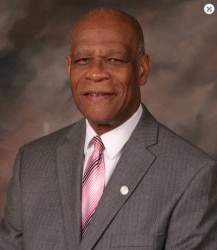On Wednesday, the U.S. Department of Education released data on first-year earnings for thousands of different college programs.
The debt and earnings information was retrieved from different student samples — debt information collected from those who graduated in 2016 and 2017 and earnings from those who completed in 2015 and 2016.
Finally, the earnings data collected was from their first year after graduation as for graduates in many fields, the first year in the workforce is not entirely indicative of lifetime earnings.
A similar share of programs offered by for-profit and nonprofit institutions that were included in the data resulted in median debt greater than median first-year earnings, around 25 percent of all programs for both sectors.
At for-profits, over half of bachelor’s programs resulted in higher debt than earnings. For bachelor’s degrees at nonprofit institutions, that number was only 17 percent, but rose to 71 percent for doctoral degrees.
Public institutions fared relatively well under this metric. The data shows that 15 percent of associate degree programs, 9 percent of bachelor’s degrees and 13 percent of master’s degrees resulted in higher debt than earnings.
Professional programs, such as medical or law degrees, appear to have relatively high debt burdens. Eighty-two percent of those degrees resulted in debt greater than earnings.
However, because of the common extended pathways to earnings in these fields (such as medical residencies), this information may not be too concerning.
Perhaps more troubling among the findings about graduate degrees, is that 27 percent of master’s degree programs resulted in higher debt than earnings. One reason for master degree graduates’ higher debt could be because the continuation of their studies in doctoral programs further delays their earnings.
On the opposite end of the spectrum, public and nonprofit bachelor’s programs such as computer science and engineering, are reported to produce careers with earnings that exceed debt by the greatest magnitude.
Many nursing or health programs at smaller public and nonprofit private institutions also rise to the top of that category. The bachelor’s program in nursing at Sonoma State University, for example, features a median debt of $12,500 and $110,300 in earnings.
At the associate level, Robert Kelchen, professor of higher education at Seton Hall University, conducted an analysis which found that the lowest-earning fields included criminal justice, health administration and teacher education.
At the graduate level, educational administration broke the top five in earnings, mostly, Kelchen said, because school superintendents tend to do quite well. Lowest-earning graduate fields included music, student counseling and social work.
In addition to helping a prospective student choose a field of study, the data could in theory help a student with an already chosen field of study pick between specific programs. For example, if you’d like to get your bachelor’s in fine and studio arts, the best university (by one metric) might be California Polytechnic State University, where the median debt is $15,000 and median earnings are $41,000.
If you’d like to study drama, the University of Nevada, in Las Vegas, may be ideal, as it had the most favorable difference between debt and earnings.
Yet, both of these colleges are public, which may make it more expensive for out-of-state students to attend. According to experts, prospective undergraduate students, if they do choose to slice and dice the numbers, typically give more weight to location and cost when it comes to choosing a postsecondary school to attend.
Keeping up to date on the education trends may prove useful to not only prospective students, but teachers and career counsellors who may seek to inform and guide their students with their career choices.

